“Isn’t that a weed?” I asked my friend.
I pointed to the pale green, hairy stem rising from the flannel-textured center rosette.
“It grows tall, you know. I pulled one last week that was taller than me — at least 7 feet!”
“No, it’s called mullein,” my friend replied. It’s actually a heritage plant, brought over from Europe by the early settlers and cultivated for its multiple medicinal properties. Every part of the plant has its purpose and is used for a wide range of ailments from ear infections to bursitis. It even helps heal hemorrhoids and gout.”
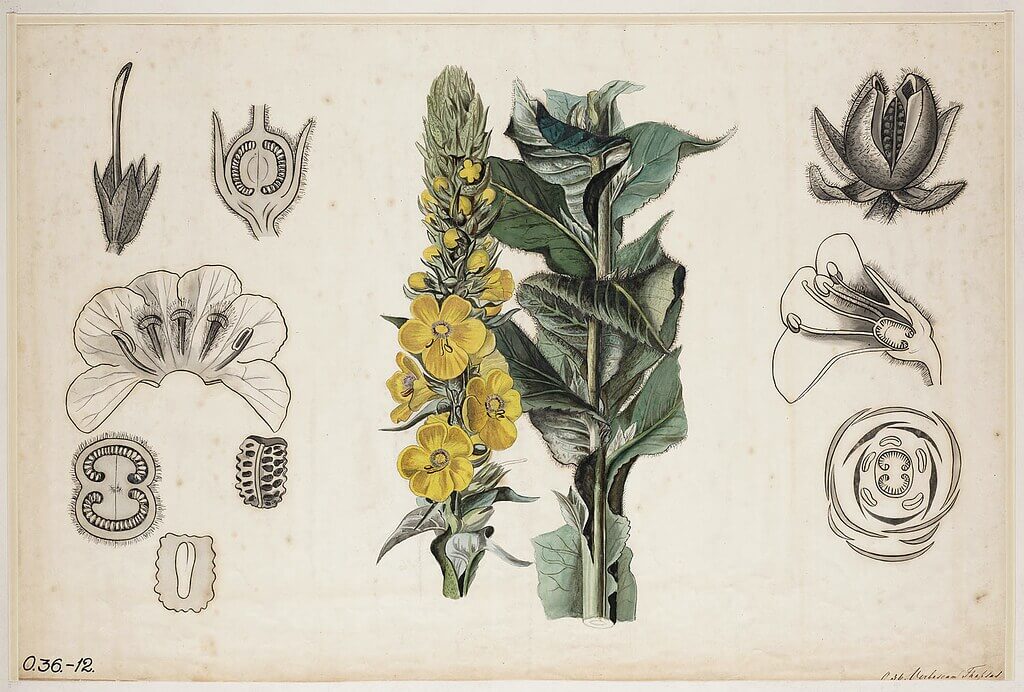
“Really!” I hadn’t realized the huge plant with tiny yellow flowers could be anything more than a weed. “I’ll have to reconsider pulling it up next time it appears in my garden.”
“It does make an interesting backdrop to a cottage garden,” my friend added. “But be careful. It is invasive.”
Related Post: English Garden Inspiration For Your Yard
Once again encouraged by a friend’s garden, I launched into my research. It was definitely a pretty plant. With its soft textured, furry foliage, I learned both the English and Latin names make sense.
Mullein is derived from the Middle English word moleyn, meaning soft. Verbascum thapsus is a modification of the Latin word barbascum, meaning bearded.
As a plant with a long history in Europe, it’s had even more names, including the Greek names of fuma and fuego: to set fire. This refers to its use when dried and rolled as wicks in oil lamps, and the use of its tall stalks (the plant is known to grow as high as 10 feet) to light funeral processions.
Plant Description
As well as the tall stalks and hairy foliage, the plant sports yellow flowers thickly clustered around the stem. It blooms from June to September with a few flowers at a time, but the best bloom is in July. Mullein is biennial and can grow in a wide variety of habitats but prefers plenty of sun.
My friend was right to warn me of mullein’s invasive nature. It’s very prolific in its seed production, though it does require an open ground space for the seeds to germinate. Once established, it’s time-intensive to abolish the mullein as the only sure way to get rid of the plant is to pull it one at a time, roots and all.
But why abolish a plant that displays well as a border plant? And is beneficial not only to humans but also to other forms of life? For instance, mullein provides a home for many insects that are destructive to other plants. With the exception of spider mites, which invade the plant in extremely hot conditions, the plant tolerates these invasive insects that may be detrimental to other plants.
Uses for Mullein
Mullein has been used as an herbal remedy since ancient times. Each part of the plant has specific medicinal uses. Dried, soaked, and chewed, the various parts of the plant could be considered a cure-all for just about any common ailment from respiratory conditions to diarrhea and from infant teething to treating wounds.
Related Post: Purslane: Weed Or Delicacy?
The most common conditions mullein is used for include:
- Colds and coughs – a sweet mullein leaf tea works as an anti-inflammatory and an expectorant.
- Ear infections – the infused oil of mullein flowers, when applied to the outer ear canal, can reduce the infection and discomfort. Combine it with infused garlic oil (which is antibacterial and antiviral) for added effect against infection.
- Diarrhea – mullein leaf tea is also useful in reducing bowel irritation, sensitivity to gastric acids in the digestive system, and digestive muscle spasms. In short, it helps prevent diarrhea.
- Teething for infants – the root, when dried, can be made into teething charms to soothe infants.
- Renal and bladder problems – an infusion of the mullein root can be helpful when treating renal problems.
- Water retention issues in the lower body – the root can be helpful in creating a soothing leg bath that assists swelling and water retention issues in the lower body.
- Infections – extracts and herbal tea from the infused root are good for treating infections.
- Athlete’s foot – extracts and herbal tea from the infused root is good for treating athlete’s foot
- Sprains and bruises, swelling and pain, rheumatism – mullein leaf poultices applied to the affected area will assist the healing process and reduce pain.
- Swollen glands – leaves soaked well in warm water when applied to swollen glands will help reduce the swelling.
- Spinal injuries – an infusion of mullein root strengthens the spine and reduces swelling and pain.
Why is mullein so beneficial and full of healing powers? The plant is a great source of multiple vitamins including B2, B5, B12, and D. On top of that, it contains even more beneficial properties such as mucilage, flavonoids, iridoids, sterols, and sugars as well as choline, iron, magnesium, potassium, sulfur, and saponins.
It’s really what some might describe as a natural wonder drug, a natural way to treat just about anything. At the very least, it’s a calming herbal remedy due to its narcotic and sedative properties.
A Note on the Potential Toxicity of Mullein
However, beware of mullein’s potential toxicity. Like any other remedy, there is always a long list of potential side effects. The mullein seed is high in rotenone which is potentially harmful and toxic. Adverse effects can include the very symptoms the mullein tea is meant to heal, like abdominal cramps, diarrhea, convulsions, and vomiting.
To avoid this, make sure there are NO SEEDS in the mullein plant flowers being used in the infusion. Expectant women and those breastfeeding should avoid using mullein tea.
While the use of mullein leaves in tea is deemed safe, extensive use on a regular basis can lead to skin irritation: rashes, redness, and other severe skin problems. Although mullein tea is supposed to help with respiratory ailments, in some individuals it can have the opposite effect, making it difficult to inhale air, constricting the chest, causing tightness in the throat, and inflammation of the chest wall.
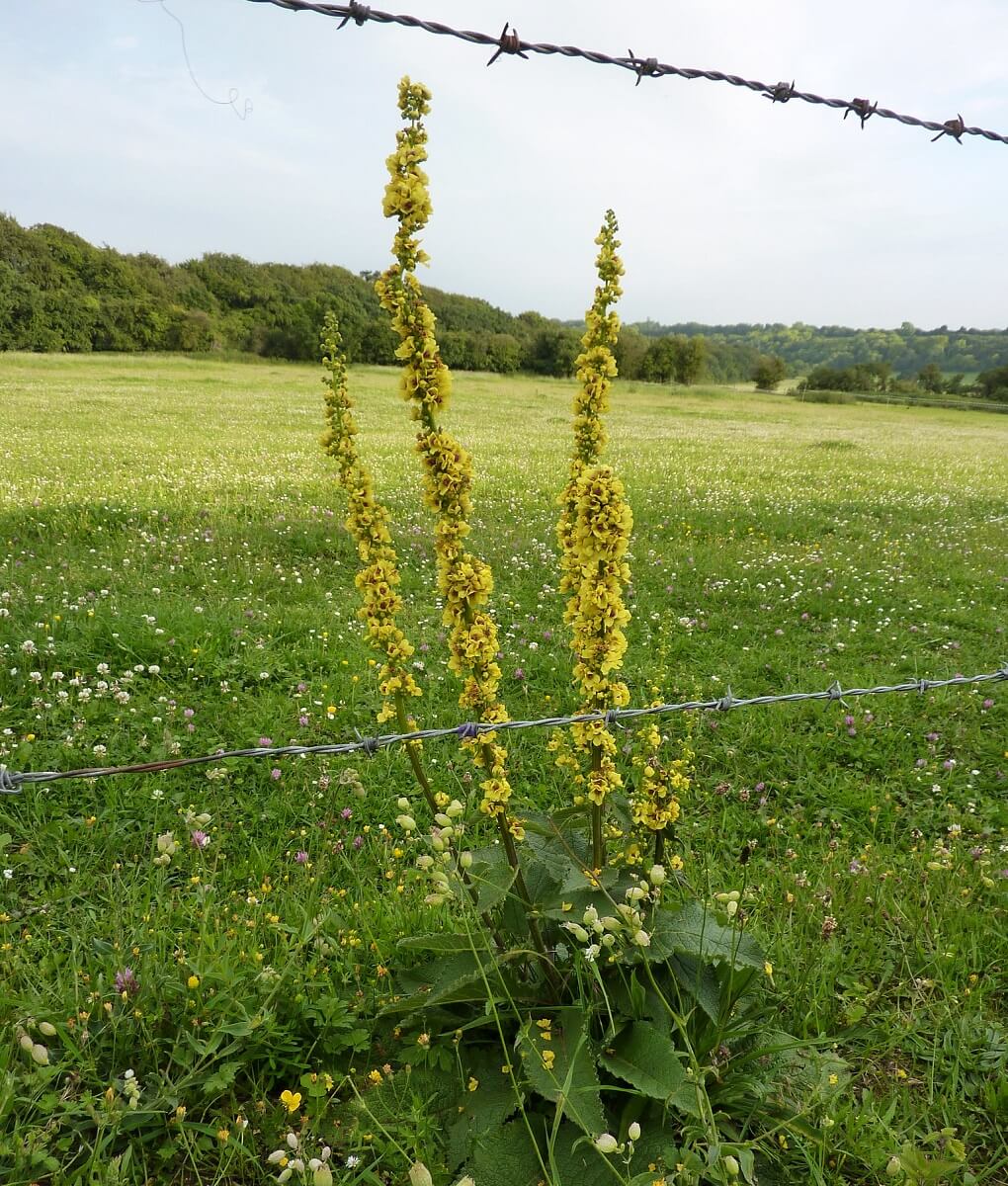
Additionally, if consumed regularly, mullein tea can cause unusual bouts of fatigue, lethargy, inflammation of the lungs or skin, and confusion, all due to the hypnotic attributes of mullein.
Since mullein tea contains coumarin, it can heighten the chance of bleeding when consumed with drugs such as heparin, aspirin, warfarin, anti-platelets like clopidogrel, and non-steroidal anti-inflammatories like ibuprofen and naproxen.
Of particular concern is mullein growing wild in parking lots or along highways as it can be potentially toxic.
Use caution when harvesting the mullein as skin contact with the fresh leaves can result in contact dermatitis, a reddened, irritating skin condition similar to the result of coming in contact with poison ivy. WEAR GLOVES!
Children and pregnant or breastfeeding mothers should not take mullein without first consulting the family physician. In fact, like anything else consumed medicinally, one should consult the doctor and/or pharmacist to ensure that it is safe to do so. There are potential side effects to anything one consumes.
How to Make Mullein Tea
To make mullein tea, steep seven fresh or dried mullein leaves and some flowers (without the seeds) in 5 cups of boiling water for about 10 minutes. Strain the tea through a cheesecloth or a coffee filter to remove the leaf hairs that can irritate the throat. The addition of the mullein flowers in the tea gives it a slightly sweet taste. Milk and/or honey can also be added to sweeten the taste.
In short, mullein is an extremely beneficial medicinal herb. Use it carefully and be sure to consult medical professionals before giving it a try. Like any other medicine, at the first sign of any serious side effect, stop using it immediately and consult a professional. While this plant may be easy to grow and seemingly easy to use as a cure-all, it can have its adverse effects like anything else.
As I write this, I’m marveling at the border of tall mullein plants that are lining the stone wall along my property line. They are tall plants, yet to flower. I look forward to seeing them bloom.


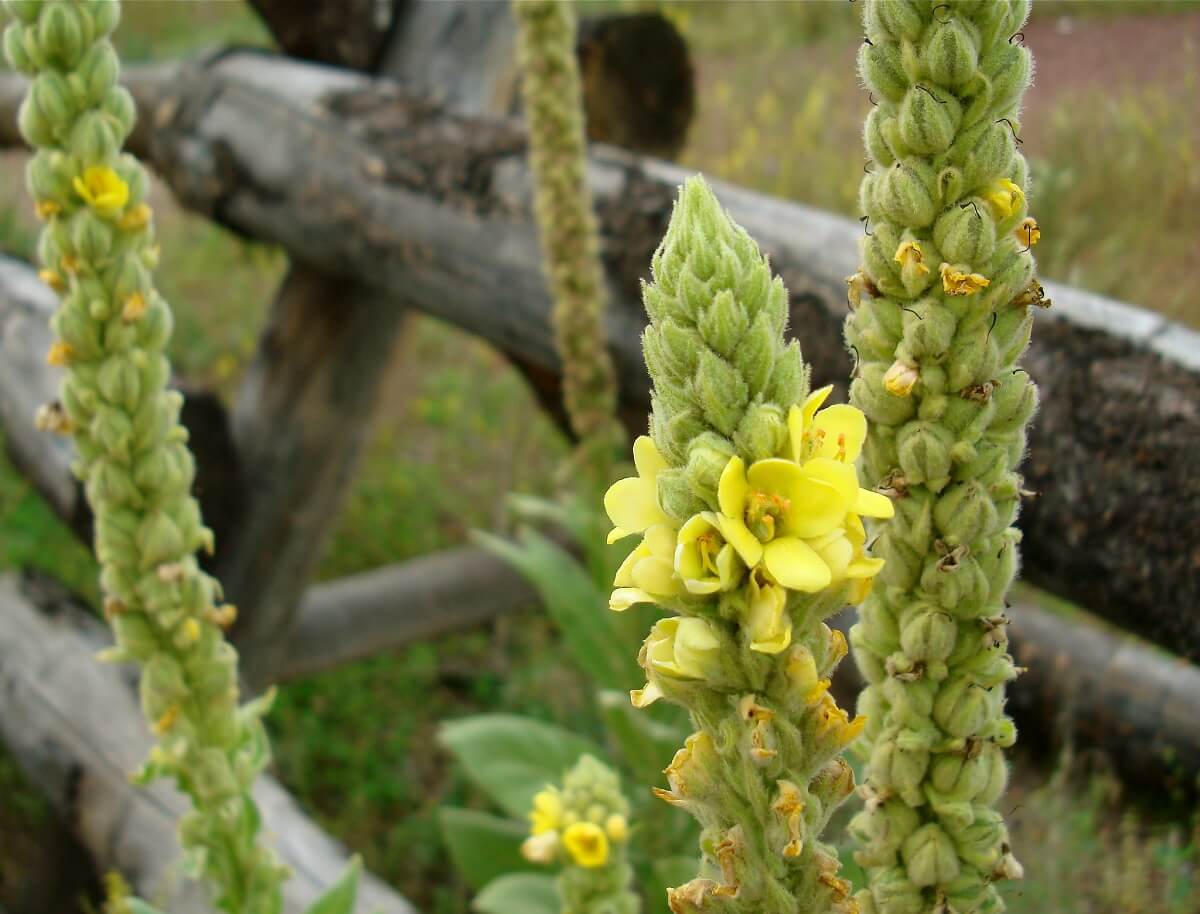

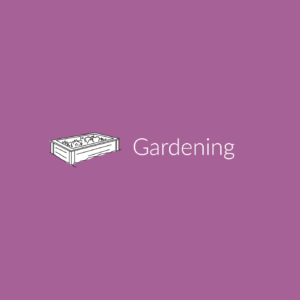


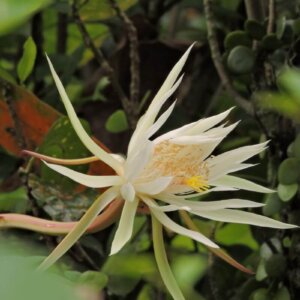
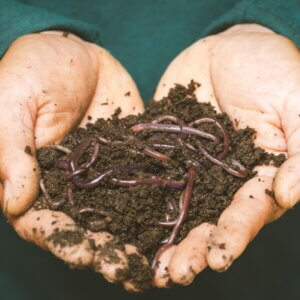

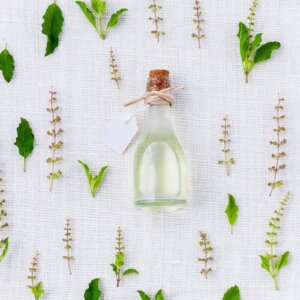
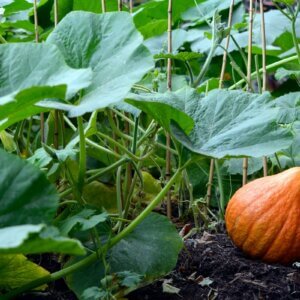
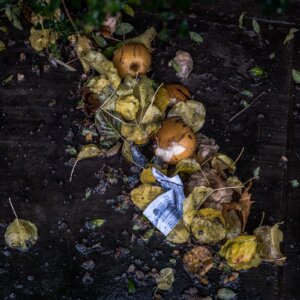

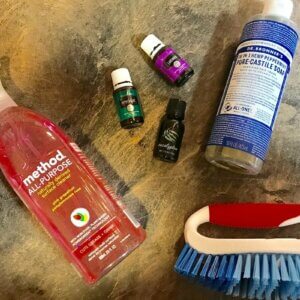


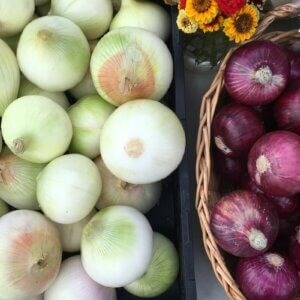
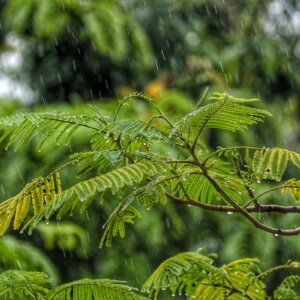



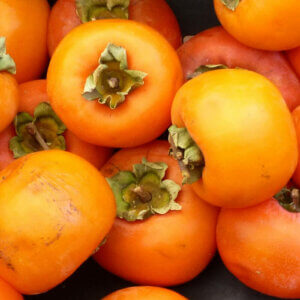
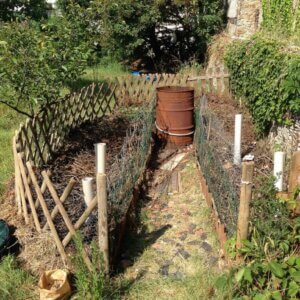
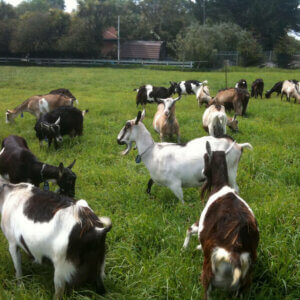
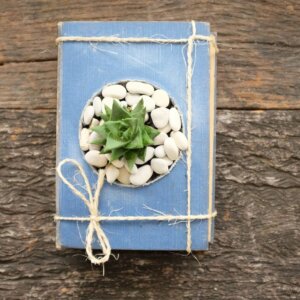
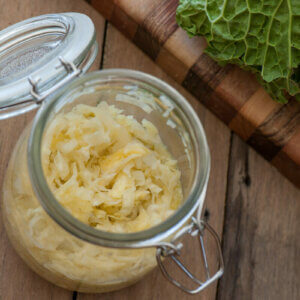
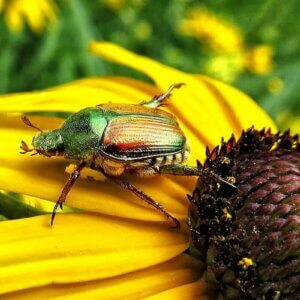
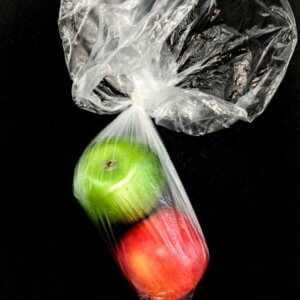

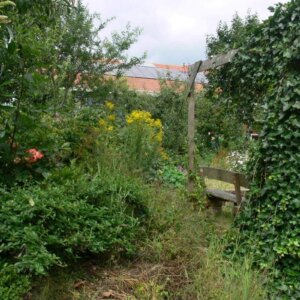
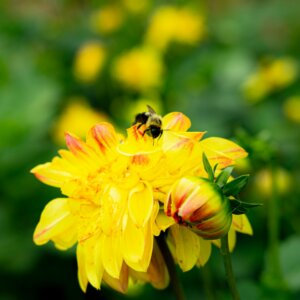
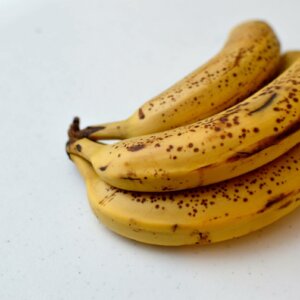





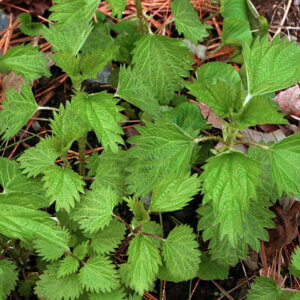

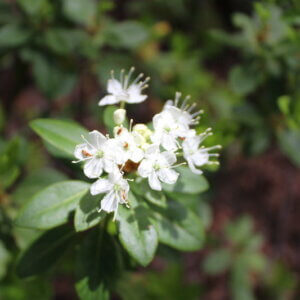


I really enjoy the huge rosettes of mullein that covers our land. I’d read somewhere that they were once used as diapers (a nickname was flannel plant?), though I have no idea what the potentially irritating hairs could do to sensitive little baby bottoms!
I have tried making ear oil from the flowers in the past–it takes a TON of flowers! Definitely a labor of love, and one I hope to be successful with sometime soon–we have enough of them, haha. Thanks for the fascinating write-up. Since there’s no getting rid of it–nor do I really want to–I need to make better use of this resource!
Ear oil? Is that for cleaning them out?
It’s specifically for treating a moderate ear infection (like the kind you get with a cold/flu/congestion sort of deal–not water-in-ear ones like swimmer’s ear). I found a recipe for it in Rosemary Gladstar’s _Medicinal Herbs: A Beginner’s Guide_, if that helps at all!
causing me diarrhea when first taken. will this go away.
I am on my third Covid19 infection-original, delta, now BA5. And, yes I am vaccinated. I found Mullein being promoted by many suffering like me for helping with the many symptoms of Covid. I got some and wow! What a difference. I can actually sleep. Helps with the coughing and congestion. We always called this plant “Counterfeit Tobacco” here in the farm. Little did we know it was such a marvelous herb for so many ailments.
We called it Indian toilet paper when I was a little kid. If you had a moment in the woods and found it nearby it was a lucky day. Never had any reaction to touching the plant.